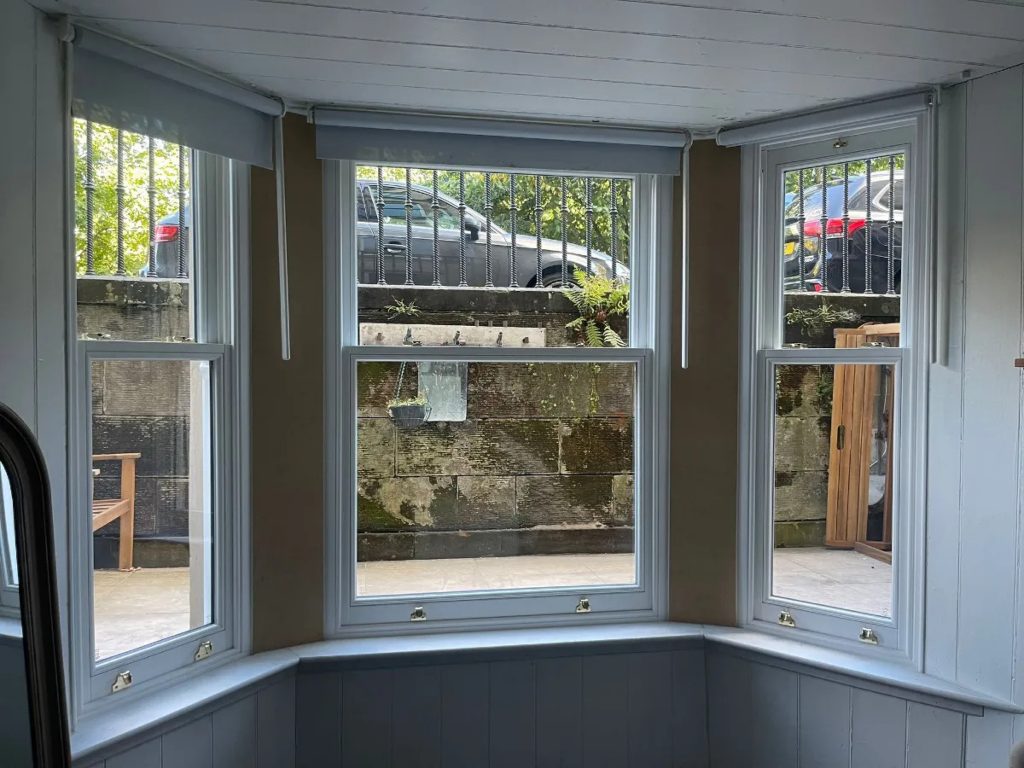How to Stop Condensation on Your Windows

Understanding the Causes and Solutions for a Common Issue with Energy-Efficient Glass
Condensation on windows can be frustrating, leading many to wonder How to Stop Condensation on Your Windows, especially when it seems to cloud your view during the colder months. However, before you start worrying that something might be wrong with your windows, it’s essential to understand that in many cases, this is entirely normal.
In fact, when it comes to modern, energy-efficient windows, condensation can actually be a good sign. This article will walk you through how condensation forms, why it occurs on energy-efficient glass, and what steps you can take to prevent excess moisture buildup inside your home.
What Causes Condensation on Your Windows?
Condensation happens when warm, moist air meets a cooler surface like a windowpane, causing water droplets to form. This process is more likely to occur in the colder months because of the temperature differences between the warm air inside your home and the cool outdoor air. Let’s explore this in more detail:
Warm Air Holds Moisture:
The air inside your home is usually warmer and can hold more moisture compared to the cooler air outside. This moisture comes from everyday activities like cooking, showering, and even breathing. When this humid air meets a cooler surface—such as your windows—it loses some of its ability to hold moisture, leading to condensation.
Temperature Differences:
During colder months, the temperature outside drops, which causes your windows to cool down. This temperature difference is especially noticeable in homes with modern double- or triple-glazed windows because the interior glass remains warmer, while the external layer cools. The meeting of warm air and cold glass results in condensation, a natural occurrence that reflects the thermal efficiency of your windows.
Energy-Efficient Windows and Condensation:
If you’re noticing condensation on the outside of your energy-efficient windows, it’s often a sign that your double- or triple-glazed units are performing well. These windows are specifically designed to keep heat inside your home, which can cause the external surface of the glass to cool down significantly.
This, in turn, can cause condensation to form on the outside of the windows—proof that they are doing their job by maintaining a barrier between the indoor warmth and the cold outdoor air.
Understanding Condensation on Modern Energy-Efficient Glass
Seeing condensation on the outside of your double-glazed windows, particularly in the mornings, might seem concerning at first. But rest assured, this is actually a sign of excellent insulation. Here’s why:
Modern energy-efficient windows are built to keep warmth inside your home. When condensation appears on the outside, it means your windows are preventing indoor heat from escaping, keeping the temperature in your home consistent.
The outer layer of the glass becomes colder than the surrounding air, which is why condensation forms. This is particularly common during autumn and winter when the difference between indoor and outdoor temperatures is most pronounced.
What this shows is that your windows are effectively reducing heat loss. As a result, they help lower your energy bills, because your heating system doesn’t have to work as hard to maintain a comfortable temperature indoors.
According to Energy Saving Trust, properly installed double glazing can save homeowners between £95 and £235 annually, depending on their home’s size and insulation.
How to Stop Excess Condensation Indoors
While condensation on the outside of energy-efficient windows is typically a good sign, excess condensation inside your home can be an issue. If you notice persistent indoor condensation, it may indicate high humidity levels or inadequate ventilation, which can lead to problems like mold growth. Here are some steps you can take to minimise moisture inside your home:
Improve Ventilation:
Proper ventilation is crucial in managing indoor condensation. Ensure that your home is well-ventilated, particularly in rooms where moisture levels tend to be higher, such as bathrooms and kitchens. Use extractor fans during activities that produce a lot of steam, such as cooking and showering. Additionally, if the weather permits, consider opening windows for short periods to allow humid air to escape. Another option is installing trickle vents on your windows to help circulate air without the need to open them fully.
Use a Dehumidifier:
For homes where humidity levels remain high, a dehumidifier can be an effective solution. Dehumidifiers work by pulling excess moisture out of the air, which helps reduce condensation on windows and other cool surfaces. This can be particularly useful in areas like basements or bathrooms, where humidity levels tend to be higher. The Environmental Protection Agency recommends maintaining indoor humidity between 30% and 50% to prevent mould growth and improve indoor air quality.
Increase Indoor Temperature:
Keeping your home at a slightly higher temperature can help prevent condensation. When indoor air is warmer, it can hold more moisture, which means it’s less likely to form condensation when it comes into contact with windows. Ensuring your home is adequately heated during colder months can significantly reduce indoor condensation.
Reduce Moisture-Producing Activities:
Being mindful of how you contribute to indoor humidity can make a big difference in controlling condensation. Simple changes, like covering pots while cooking, using exhaust fans when taking showers, or drying clothes outdoors instead of inside, can help reduce the amount of moisture in the air.
Why Condensation on Energy-Efficient Windows is a Good Thing
Many homeowners are surprised to learn that condensation on the outside of modern windows is actually a positive sign. The reason is simple: condensation on the outer pane indicates that the window’s insulation is preventing heat from escaping.
This exterior condensation shows that the glass has cooled down enough to form water droplets, a sign that your windows are maintaining a solid barrier between the warm air inside your home and the colder air outside. In other words, the energy-efficient technology is doing exactly what it was designed to do: trap heat indoors.
By keeping heat inside, energy-efficient windows help reduce heating costs. Over time, they can lead to significant savings on your energy bills, while also improving comfort levels in your home. Plus, these windows contribute to better air quality by preventing outdoor drafts from carrying in dust and allergens.
Final Thoughts
Condensation on energy-efficient windows is typically nothing to worry about. It indicates that your windows are doing their job by keeping your home warm and reducing energy loss. However, if you experience persistent indoor condensation, it could signal high humidity or poor ventilation that may require addressing.
Taking steps to improve ventilation, manage indoor humidity, and reduce moisture-producing activities will help prevent excess condensation and ensure your home remains comfortable, energy-efficient, and free from moisture-related issues.
FAQs about Condensation on Windows
- Why do my windows have condensation in the morning? Morning condensation is common, especially in colder months, because nighttime temperatures cool the glass. When warm, moist air inside your home meets this cooler surface, condensation forms.
- Is indoor condensation a bad sign? Indoor condensation, especially when persistent, could be a sign of poor ventilation or high humidity levels. It’s worth addressing this to prevent potential issues like mold growth.
- Why do energy-efficient windows get condensation on the outside? Exterior condensation on energy-efficient windows is a positive sign that the windows are insulating your home effectively. It shows that the warm air inside is being kept in, while the outer surface of the glass cools down.
- How can I reduce condensation on my windows? Improving ventilation, using a dehumidifier, keeping your home warmer, and reducing moisture-producing activities are all effective ways to reduce condensation.
- Can condensation damage my windows? While occasional condensation is normal, prolonged exposure to high humidity can cause damage to window seals and promote mould growth. Addressing indoor moisture levels will help prevent these issues.




